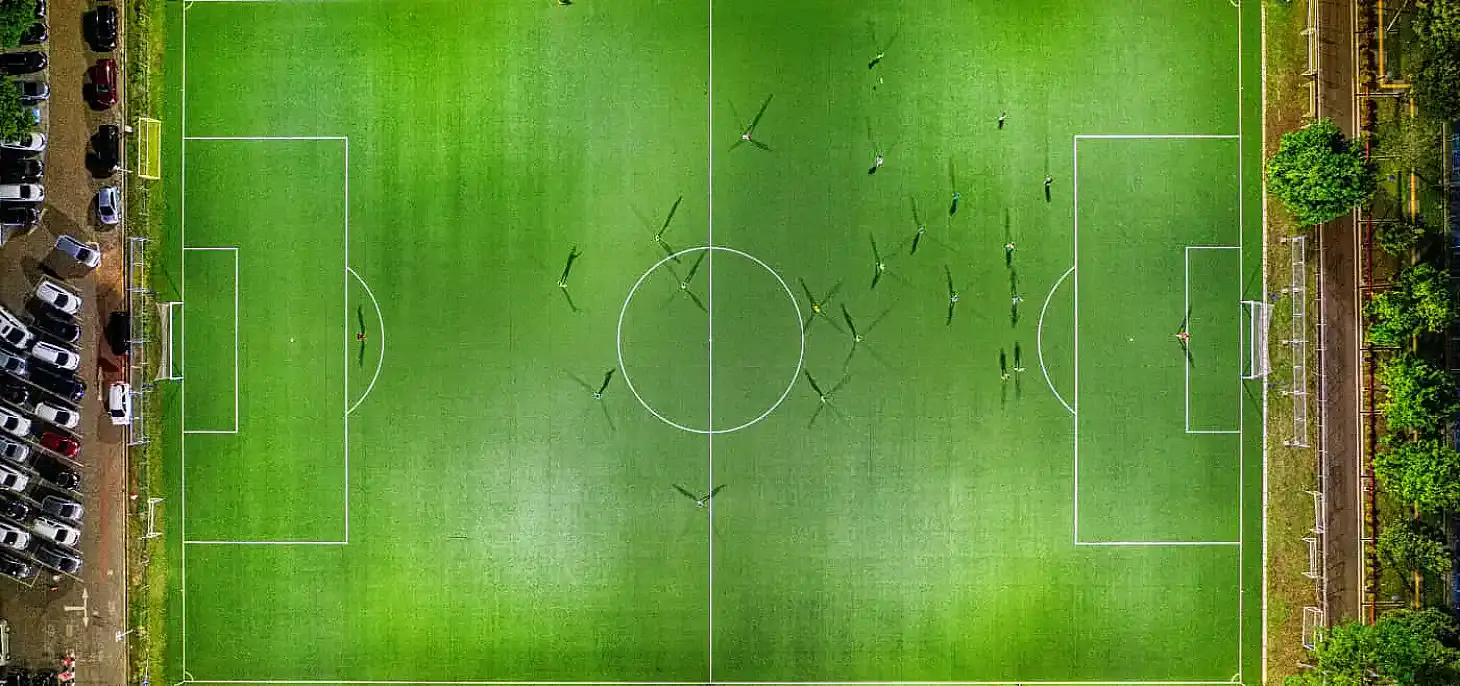How Big Is a Football Field?
A football field doesn’t necessarily have to be a specific size, right? That might be true for casual kickabouts, where even goalposts aren’t always needed—just a ball and some agreed-upon rules.
However, the size of a football field is often used as a reference in media to illustrate dimensions. Whether in TV reports or newspapers, comparisons to football fields are frequently made, as if everyone instinctively knows how big a "standard" field actually is.
But what are the exact measurements of a football pitch? Are all fields the same size? And how do these dimensions impact the game? Let's take a closer look.
Are All Football Pitches the Same Size?
The short answer is no—there is no fixed, universal size for football fields. However, this doesn’t mean there are no rules or guidelines.
The German Football League (DFL) and German Football Association (DFB) define general stadium and pitch regulations, but they allow for flexibility within a given range. These regulations specify maximum and minimum field dimensions, ensuring some level of consistency while allowing for adaptations.
📌 Basic rules for pitch dimensions:
- The sideline (length) must always be longer than the goal line (width).
- White pitch markings must be no wider than 12 cm, except for specific points such as the penalty spot.
These rules create a rectangle-shaped field, with varied dimensions depending on the competition level.
Official Football Field Dimensions
National Matches (Germany & Domestic Leagues):
✔ Length (sideline): 90 to 120 meters
✔ Width (goal line): 45 to 90 meters
International Matches (FIFA & UEFA Standards):
✔ Length: 100 to 110 meters
✔ Width: 64 to 75 meters
This means that the total area of a football field can range from 4,050 to 10,800 square meters—or roughly 0.4 to 1 hectare.
For professional matches, most pitches follow the DFB standard of 105 meters by 68 meters, ensuring consistency across competitions.
Beyond Size: Markings and Key Areas of a Football Field
Field size alone doesn’t define a regulation pitch—certain markings and zones are also essential:
✔ The halfway line divides the pitch into two equal halves, with the kick-off circle (9.15m radius) at its center.
✔ The penalty area (16.5m from the goal line), often called the “18-yard box”, defines where goalkeepers can handle the ball and where penalties are awarded.
✔ The goal area (5.5m from the goal line) is a smaller section within the penalty area.
✔ The corner arc (1m radius) marks where corner kicks are taken.
These features ensure a standardized playing environment, allowing for fair competition and tactical consistency across different stadiums.
Why Do Pitch Sizes Vary?
While most professional fields stick to a standard 105m x 68m, clubs can adjust dimensions within legal limits. This flexibility allows teams to influence playing style:
- Larger pitches (e.g., FC Barcelona's Camp Nou) favor teams with possession-based tactics and wide attacking play.
- Smaller pitches (e.g., Atlético Madrid’s old Vicente Calderón) encourage compact defensive setups and direct counter-attacks.
This means pitch size isn’t just a technicality—it can affect tactics and match dynamics.
Conclusion: Football Pitches Are Not One-Size-Fits-All
While football fields must follow specific guidelines, there is no universal size. The DFB and FIFA have recommended dimensions, but stadiums may vary within allowed ranges.
✔ Most professional fields follow the 105m x 68m standard for consistency.
✔ Pitch size can influence gameplay, affecting tactics and team strategies.
✔ Training pitches and youth fields often have different dimensions, tailored to player development and space constraints.
Next time you hear a commentator compare something to a "football field," you’ll know that the size of the reference might not be as fixed as it seems!






